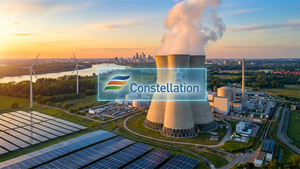
As of October 2025, the global semiconductor market is not just experiencing a boom; it's undergoing a profound, structural transformation dubbed the "AI Supercycle." This unprecedented surge, driven by the insatiable demand for artificial intelligence, is repositioning semiconductors as the undisputed lifeblood of a burgeoning global AI economy. With global semiconductor sales projected to hit approximately $697 billion in 2025—an impressive 11% year-over-year increase—the industry is firmly on an ambitious trajectory towards a staggering $1 trillion valuation by 2030, and potentially even $2 trillion by 2040.
The immediate significance of this trend cannot be overstated. The massive capital flowing into the sector signals a fundamental re-architecture of global technological infrastructure. Investors, governments, and tech giants are pouring hundreds of billions into expanding manufacturing capabilities and developing next-generation AI-specific hardware, recognizing that the very foundation of future AI advancements rests squarely on the shoulders of advanced silicon. This isn't merely a cyclical market upturn; it's a strategic global race to build the computational backbone for the age of artificial intelligence.
Investment Tides and Technological Undercurrents in the Silicon Sea
The detailed technical coverage of current investment trends reveals a highly dynamic landscape. Companies are slated to inject around $185 billion into capital expenditures in 2025, primarily to boost global manufacturing capacity by a significant 7%. However, this investment isn't evenly distributed; it's heavily concentrated among a few titans, notably Taiwan Semiconductor Manufacturing Company (TSMC) (NYSE: TSM) and Micron Technology (NASDAQ: MU). Excluding these major players, overall semiconductor CapEx for 2025 would actually show a 10% decrease from 2024, highlighting the targeted nature of AI-driven investment.
Crucially, strategic government funding initiatives are playing a pivotal role in shaping this investment landscape. Programs such as the U.S. CHIPS and Science Act, Europe's European Chips Act, and similar efforts across Asia are channeling hundreds of billions into private-sector investments. These acts aim to bolster supply chain resilience, mitigate geopolitical risks, and secure technological leadership, further accelerating the semiconductor industry's expansion. This blend of private capital and public policy is creating a robust, if geographically fragmented, investment environment.
Major semiconductor-focused Exchange Traded Funds (ETFs) reflect this bullish sentiment. The VanEck Semiconductor ETF (SMH), for instance, has demonstrated robust performance, climbing approximately 39% year-to-date as of October 2025, and earning a "Moderate Buy" rating from analysts. Its strong performance underscores investor confidence in the sector's long-term growth prospects, driven by the relentless demand for high-performance computing, memory solutions, and, most critically, AI-specific chips. This sustained upward momentum in ETFs indicates a broad market belief in the enduring nature of the AI Supercycle.
Nvidia and TSMC: Architects of the AI Era
The impact of these trends on AI companies, tech giants, and startups is profound, with Nvidia (NASDAQ: NVDA) and TSMC (NYSE: TSM) standing at the epicenter. Nvidia has solidified its position as the world's most valuable company, with its market capitalization soaring past an astounding $4.5 trillion by early October 2025, and its stock climbing approximately 39% year-to-date. An astonishing 88% of Nvidia's latest quarterly revenue, with data center revenue accounting for nearly 90% of the total, is now directly attributable to AI sales, driven by overwhelming demand for its GPUs from cloud service providers and enterprises. The company's strategic moves, including the unveiling of NVLink Fusion for flexible AI system building, Mission Control for data center management, and a shift towards a more open AI infrastructure ecosystem, underscore its ambition to maintain its estimated 80% share of the enterprise AI chip market. Furthermore, Nvidia's next-generation Blackwell AI chips (GeForce RTX 50 Series), boasting 92 billion transistors and 3,352 trillion AI operations per second, are already securing over 70% of TSMC's advanced chip packaging capacity for 2025.
TSMC, the undisputed global leader in foundry services, crossed the $1 trillion market capitalization threshold in July 2025, with AI-related applications contributing a substantial 60% to its Q2 2025 revenue. The company is dedicating approximately 70% of its 2025 capital expenditures to advanced process technologies, demonstrating its commitment to staying at the forefront of chip manufacturing. To meet the surging demand for AI chips, TSMC is aggressively expanding its CoWoS (Chip-on-Wafer-on-Substrate) advanced packaging production capacity, aiming to quadruple it from approximately 36,000 wafers per month to 90,000 by the end of 2025, and further to 130,000 per month by 2026. This monumental expansion, coupled with plans for volume production of its cutting-edge 2nm process in late 2025 and the construction of nine new facilities globally, cements TSMC's critical role as the foundational enabler of the AI chip ecosystem.
While Nvidia and TSMC dominate, the competitive landscape is evolving. Other major players like Advanced Micro Devices (NASDAQ: AMD) and Intel Corporation (NASDAQ: INTC) are aggressively pursuing their own AI chip strategies, while hyperscalers such as Alphabet (NASDAQ: GOOGL) (with its TPUs), Amazon (NASDAQ: AMZN) (with Trainium), and Microsoft (NASDAQ: MSFT) (with Maia) are developing custom silicon. This competitive pressure is expected to see these challengers collectively capture 15-20% of the AI chip market, potentially disrupting Nvidia's near-monopoly and offering diverse options for AI labs and startups. The intense focus on custom and specialized AI hardware signifies a strategic advantage for companies that can optimize their AI models directly on purpose-built silicon, potentially leading to significant performance and cost efficiencies.
The Broader Canvas: AI's Demand for Silicon Innovation
The wider significance of these semiconductor investment trends extends deep into the broader AI landscape. Investor sentiment remains overwhelmingly optimistic, viewing the industry as undergoing a fundamental re-architecture driven by the "AI Supercycle." This period is marked by an accelerating pace of technological advancements, essential for meeting the escalating demands of AI workloads. Beyond traditional CPUs and general-purpose GPUs, specialized chip architectures are emerging as critical differentiators.
Key innovations include neuromorphic computing, exemplified by Intel's Loihi 2 and IBM's TrueNorth, which mimic the human brain for ultra-low power consumption and efficient pattern recognition. Advanced packaging technologies like TSMC's CoWoS and Applied Materials' Kinex hybrid bonding system are crucial for integrating multiple chiplets into complex, high-performance AI systems, optimizing for power, performance, and cost. High-Bandwidth Memory (HBM) is another critical component, with its market revenue projected to reach $21 billion in 2025, a 70% year-over-year increase, driven by intense focus from companies like Samsung (KRX: 005930) on HBM4 development. The rise of Edge AI and distributed processing is also significant, with AI-enabled PCs expected to constitute 43% of all shipments by the end of 2025, as companies like Microsoft and Apple (NASDAQ: AAPL) integrate AI directly into operating systems and devices. Furthermore, innovations in cooling solutions, such as Microsoft's microfluidics breakthrough, are becoming essential for managing the immense heat generated by powerful AI chips, and AI itself is increasingly being used as a tool in chip design, accelerating innovation cycles.
Despite the euphoria, potential concerns loom. Some analysts predict a possible slowdown in AI chip demand growth between 2026 and 2027 as hyperscalers might moderate their initial massive infrastructure investments. Geopolitical influences, skilled worker shortages, and the inherent complexities of global supply chains also present ongoing challenges. However, the overarching comparison to previous technological milestones, such as the internet boom or the mobile revolution, positions the current AI-driven semiconductor surge as a foundational shift with far-reaching societal and economic impacts. The ability of the industry to navigate these challenges will determine the long-term sustainability of the AI Supercycle.
The Horizon: Anticipating AI's Next Silicon Frontier
Looking ahead, the global AI chip market is forecast to surpass $150 billion in sales in 2025, with some projections reaching nearly $300 billion by 2030, and data center AI chips potentially exceeding $400 billion. The data center market, particularly for GPUs, HBM, SSDs, and NAND, is expected to be the primary growth engine, with semiconductor sales in this segment projected to grow at an impressive 18% Compound Annual Growth Rate (CAGR) from $156 billion in 2025 to $361 billion by 2030. This robust outlook highlights the sustained demand for specialized hardware to power increasingly complex AI models and applications.
Expected near-term and long-term developments include continued innovation in specialized chip architectures, with a strong emphasis on energy efficiency and domain-specific acceleration. Emerging technologies such as photonic computing, quantum computing components, and further advancements in heterogeneous integration are on the horizon, promising even greater computational power. Potential applications and use cases are vast, spanning from fully autonomous systems and hyper-personalized AI services to scientific discovery and advanced robotics.
However, significant challenges need to be addressed. Scaling manufacturing to meet demand, managing the escalating power consumption and heat dissipation of advanced chips, and controlling the spiraling costs of fabrication are paramount. Experts predict that while Nvidia will likely maintain its leadership, competition will intensify, with AMD, Intel, and custom silicon from hyperscalers potentially capturing a larger market share. Some analysts also caution about a potential "first plateau" in AI chip demand between 2026-2027 and a "second critical period" around 2028-2030 if profitable use cases don't sufficiently develop to justify the massive infrastructure investments. The industry's ability to demonstrate tangible returns on these investments will be crucial for sustaining momentum.
The Enduring Legacy of the Silicon Supercycle
In summary, the current investment trends in the semiconductor market unequivocally signal the reality of the "AI Supercycle." This period is characterized by unprecedented capital expenditure, strategic government intervention, and a relentless drive for technological innovation, all fueled by the escalating demands of artificial intelligence. Key players like Nvidia and TSMC are not just beneficiaries but are actively shaping this new era through their dominant market positions, massive investments in R&D, and aggressive capacity expansions. Their strategic moves in advanced packaging, next-generation process nodes, and integrated AI platforms are setting the pace for the entire industry.
The significance of this development in AI history is monumental, akin to the foundational shifts brought about by the internet and mobile revolutions. Semiconductors are no longer just components; they are the strategic assets upon which the global AI economy will be built, enabling breakthroughs in machine learning, large language models, and autonomous systems. The long-term impact will be a fundamentally reshaped technological landscape, with AI deeply embedded across all industries and aspects of daily life.
What to watch for in the coming weeks and months includes continued announcements regarding manufacturing capacity expansions, the rollout of new chip architectures from competitors, and further strategic partnerships aimed at solidifying market positions. Investors should also pay close attention to the development of profitable AI use cases that can justify the massive infrastructure investments and to any shifts in geopolitical dynamics that could impact global supply chains. The AI Supercycle is here, and its trajectory will define the future of intelligence.
This content is intended for informational purposes only and represents analysis of current AI developments.
TokenRing AI delivers enterprise-grade solutions for multi-agent AI workflow orchestration, AI-powered development tools, and seamless remote collaboration platforms.
For more information, visit https://www.tokenring.ai/.






